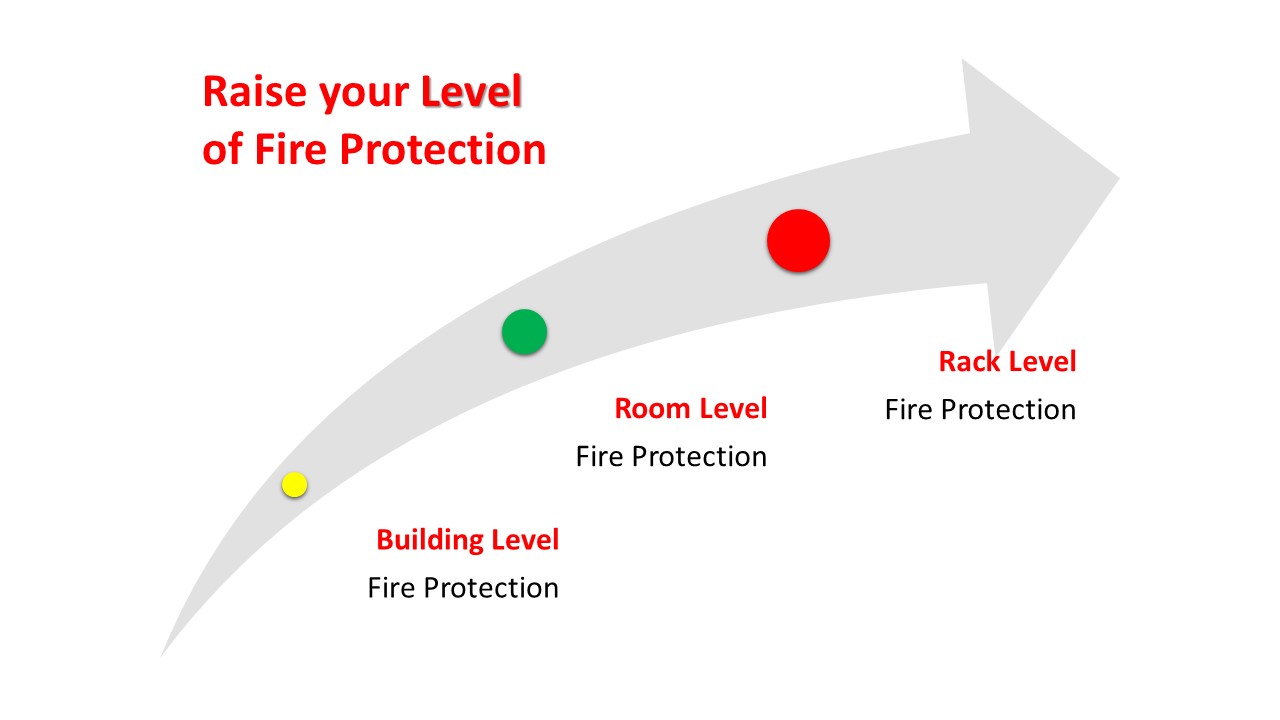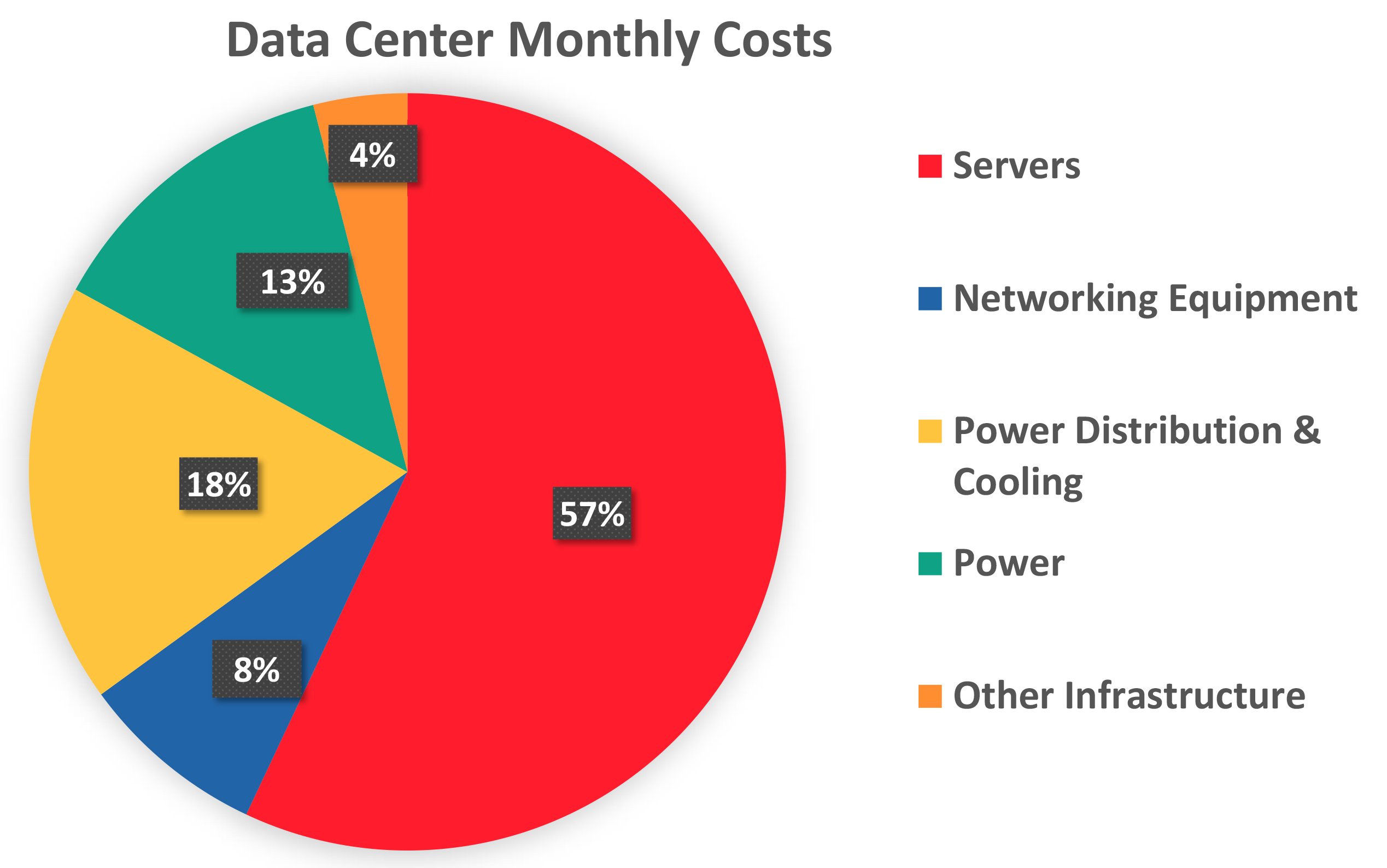Data centers come in all shapes and sizes from on-premise server rooms to enterprise data centers to the hyperscale data center for cloud computing. Protecting uptime, the amount of time servers stay up and running, for any type of data center is critical. In 1995, the Uptime Institute developed a four-tiered classification system for data center reliability. Power, cooling, monitoring, security, and serviceability are the factors that determine the tier level of a data center. In deciding what tier level best suits your operations, you must establish how much downtime you can afford. Tier 4 has the highest level with redundant power, cooling, hardware, and fault tolerance components. This tier can only tolerate 26.3 minutes of downtime a year, and the only single- points-of-failure includes emergency power off and fire.
Data Center Fire Protection
Fire is a point-of-failure that falls under every tier level and can greatly impact downtime. In this article, we will focus on fire protection because there are numerous fire risks present in data centers, large and small. Fires can occur within the digital equipment, wires, cables, HVAC equipment, raised floors, suspended ceilings, and other combustibles found in data centers. These fire risks lead data centers to address fire protection at three different levels – building level, room level, and a rack-level (in-cabinet).

1. Building Level Fire Protection
The first level of fire protection is at the building level. The main goal is to protect the building and employees from fire. The type of fire protection most commonly used is fire sprinklers and handheld extinguishers. The building code for handheld extinguishers is that for every 3,000 square feet there be one handheld fire extinguisher if class A combustible materials (cloth, wood, paper, rubber, and plastics) are in the workplace. A building can also use passive fire protection, which is the installation of firewalls and fire-rated floor assemblies that considerably delay the spread of fire into other areas of the building.
2. Room Level Fire Protection
The National Fire Protection Association (NFPA) sets the standards for room level protection. Standards for data center fire protection at the room level are the NFPA 75 - Standard for the Fire Protection of Information Technology Equipment and, in some cases, NFPA 76 - Standard for the Fire Protection of Telecommunications Facilities. The NFPA 75 fire code is the bare minimum for data centers to pass the building code requirements and avoid penalties. The standard calls for fire sprinkler systems, either wet pipe sprinklers or pre-action fire sprinklers. A wet pipe sprinkler system has the water already present in the piping and can immediately disperse once the alarm activates. The downside to this type of sprinkler system is the pipe can leak and drip onto equipment in the room. A pre-action system is the most commonly used room fire protection. It requires at least two points of fire detection to activate the sprinkler system. Some systems even break the room down into quadrants, and sprinklers will only go off in the activated quadrant. Fire sprinkler systems are the least expensive option for data center fire protection. However, water can cause as much damage to servers and hard drives as a fire would so many data centers prefer gas systems.
The gaseous systems use either inert gas and clean agent gas. An inert gas system uses a mixture of argon and nitrogen gases to decrease oxygen levels present in the room which naturally puts out the fire. A drawback to inert systems is they have a large footprint due to the amount of gas cylinders needed to effectively saturate the given area. Because sounds over 130 decibels destroy hard drives in a data center, the system requires special nozzles to muffle the powerful sound given off when the inert system activates.
The two common clean agent gas systems are FK-5-1-12 and FM-200. They suppress the fire by reducing the heat of the fire through absorption. These gases have zero ozone depletion, which makes them safe for the environment and around humans. The physical footprint is smaller than inert gas systems because they don’t require as much agent to fill up an entire room. Clean agent gases are electrically non-conductive, non-corrosive, and leave no residue upon evaporation. This makes them the ideal fire suppression agents in data centers. Like fire sprinklers, these systems have a piping system installed throughout the room. The system activates through smoke and heat detection, and the clean agent gas disperses evenly throughout the room through nozzles. These systems are total flood or engineered systems.
3. Rack Level Fire Protection
The last level of data center fire protection is at the rack level. This fire protection is essential to protecting specific equipment and limiting damage. The mandatory fire sprinklers will protect the building and the room from fire, but the equipment, valued at 57% of the cost in the room, is not unprotected. This creates a need to protect the equipment from a fire at the rack level to save the investment. Installing a pre-engineered automatic fire suppression system will protect the equipment by detecting the fire within seconds and suppress it before the total flood or sprinkler system activates. This prevents equipment damage causes by a water-based sprinkler and avoids the discharge of large amounts of agent in a total flood cylinder which is expensive to refill.

The pre-engineered system routes fire detection tubing through the individual racks and connects the tubing to a cylinder with clean agent. When a fire starts, the detection tubing senses the fire and activates the systems to suppress the fire in the specific rack. The systems use clean agent which protects the equipment from further damage and minimizes downtime in the data center. Reducing downtime is a key factor for each data center tier level to maintain their uptime.

